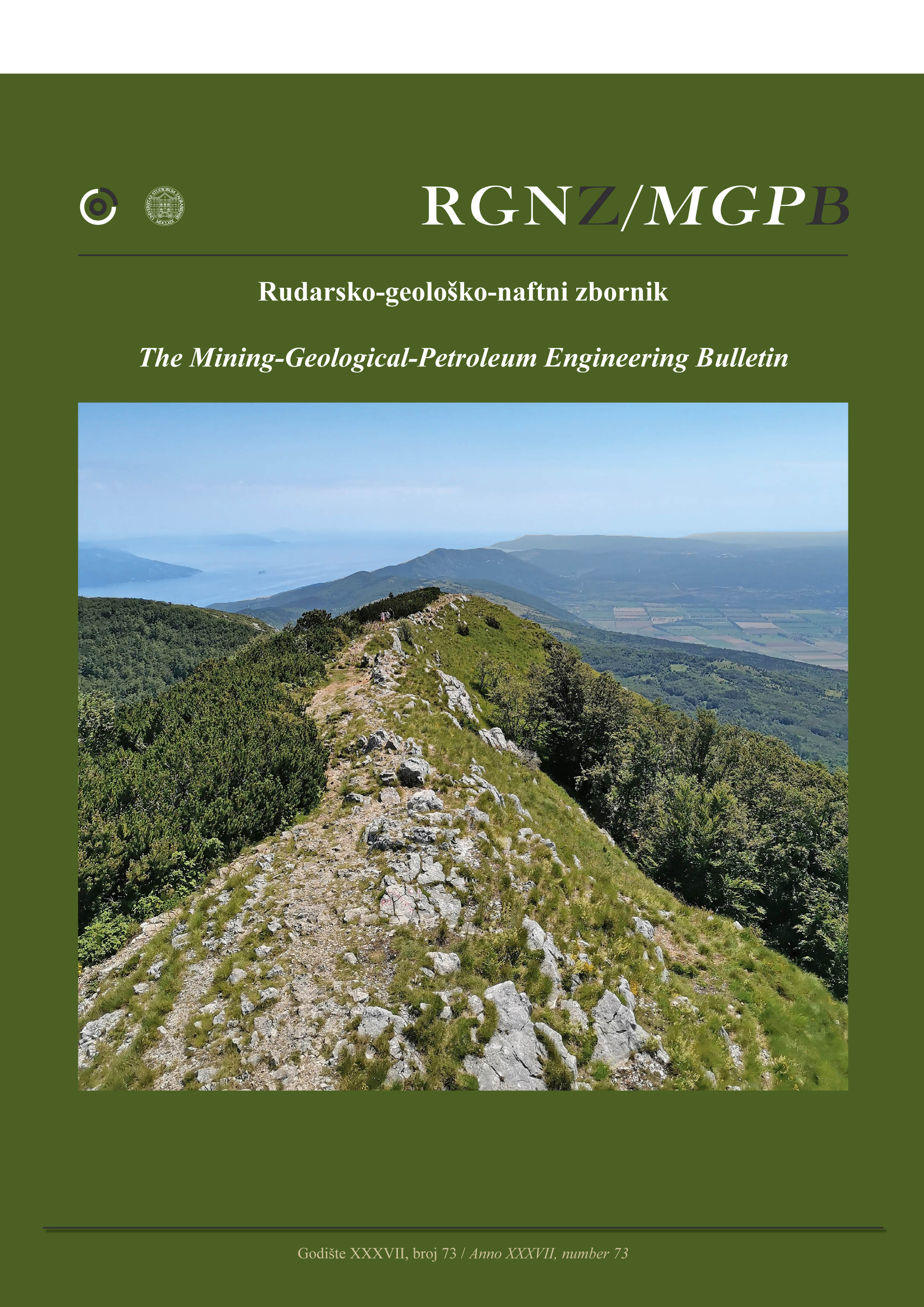Identifying the Basement Structure of the Sula Fault Zone in the Banggai-Sula Microcontinent Region, Molucca Sea, based on 2D Gravity Inversion Modelling using Particle Swarm Optimisation and 3D Modelling using Grablox
DOI:
https://doi.org/10.17794/rgn.2025.2.10Keywords:
gravity, inversion modelling, particle swarm optimisation, Banggai-Sula, Molucca SeaAbstract
This study aims to delineate the basement structure of Sula fault zones within the Banggai-Sula Microcontinent Region through the implementation of 2D and 3D gravity inversion modelling. The Sula fault is a consequence of the convergence between the Banggai-Sula Microcontinent and northern regions, or the compression caused by the extrusion of material from the Molucca Sea collision zone to the south. This is an active fault, with a few earthquakes in the last two decades. As a complex active fault, this presents several questions, particularly about the fault's structure. Residual anomaly data was modelled in two dimensions using Particle Swarm Optimisation method and in three dimensions with Grablox software. The gravity inversion results indicate that the basement depth in the nine profile incision zones, which are perpendicular to the fault zone, range from 120 m to 9308 m. This research region can be separated into two fault zones based on the low-value residual anomalies. Fault zone 1 exhibits a basement depth range of 2843.3 m to 6526.9 m. This region has rock components with a low density ranging from 1.68 g/cm³ to 2.20 g/cm³. Fault zone 2 exhibits a basement depth range of 3716.3 m to 9308.4 m. The geological layer comprises constituent rocks with a low density of 1.24 g/cm³, in contrast to the northern rocks averaging 2.4 g/cm³ and the southern rocks averaging between 2.5 g/cm³ and 2.7 g/cm³.
The average depth of faults in fault zones 1 and 2 is 5200 m. The inversion method using PSO can yield estimates for the basement depth of the fault zone. Derivative analysis indicates that the east-west-trending fault structure in fault zone 1 and fault zone 2 aligns with the tectonic characteristics of the Banggai-Sula microcontinent, hence affirming the presence of an east-west fault in the area.
Downloads
Published
Issue
Section
License
Copyright (c) 2025 Cahya Damayanti, Sismanto Sismanto, Lina Handayani, Ari Setiawan

This work is licensed under a Creative Commons Attribution 4.0 International License.
Creative Commons-BY
Authors who publish with this journal agree to the following terms:
In agreeing this form, you certify that:
- You read the ethical codex of the RGN zbornik available at journal web.
- You submitted work is your original work, and has not previously been published and does not include any form of plagiarism.
- You own copyright in the submitted work, and are therefore permitted to assign the licence to publish to RGN zbornik.
- Your submitted work contains no violation of any existing copyright or other third party right or any material of an obscene, libellous or otherwise unlawful nature.
- You have obtained permission for and acknowledged the source of any illustrations, diagrams or other material included in the work of which you are not the copyright owner.
- You have taken due care to ensure the accuracy of the work, and that, to the best of your knowledge, there are no false statements made within it.
- All co-authors of this submitted work are aware of, and in agreement with, the terms of this licence and that the submitted manuscript has been approved by these authors.
Publication licence
You retain copyright in your submitted work, according to journal license policy (CC-BY). By signing this form you agree that RGN zbornik may publish it under the publication licence. In summary the licence allows the following:
Anyone is free:
- To copy, distribute, display, and perform the work.
- To make derivative works.
Under the following conditions:
- The original author must always be given credit.
- The work may not be used for commercial purposes.
- If the work is altered, transformed, or built upon, the resulting work may only be distributed under a licence identical to this one.
Exceptions to the licence
In addition to publishing the work printed under the above licence, RGN zbornik will also enable the work to be visible online.
The journal editorial can change the licence rules anytime but it cannot retroactively restrict author(s) rights.


